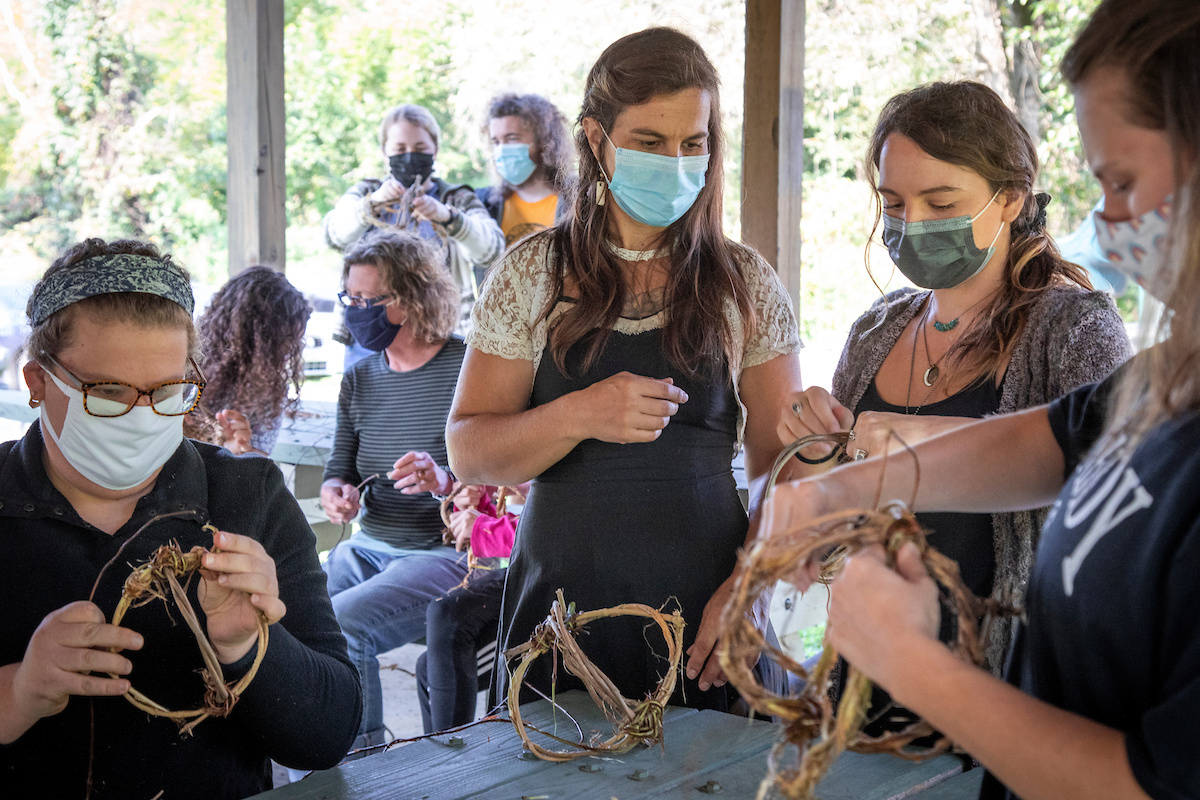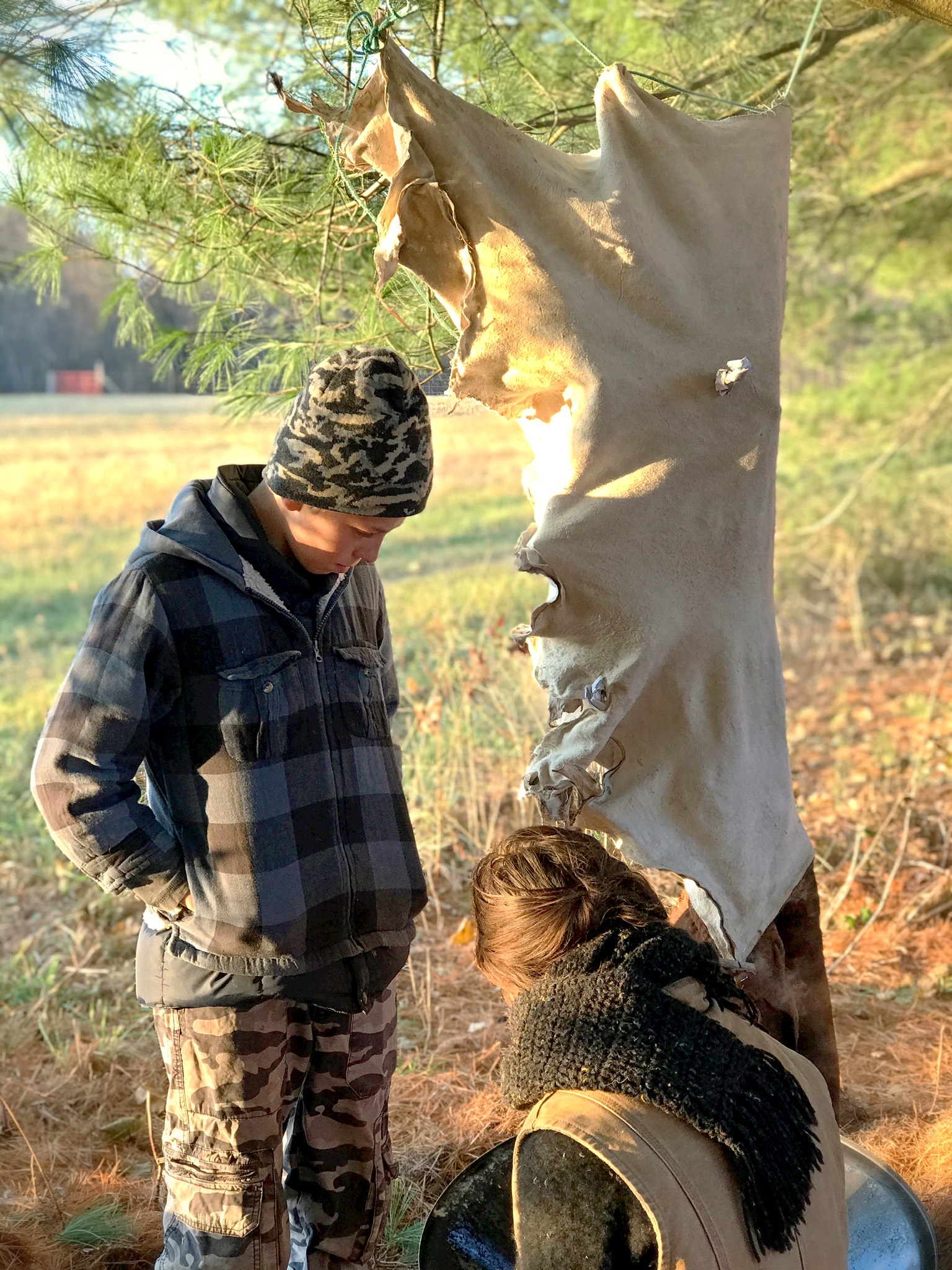We caught up with the brilliant and insightful Talcon Quinn a few weeks ago and have shared our conversation below.
Alright, Talcon thanks for taking the time to share your stories and insights with us today. Are you happy as a creative professional? Do you sometimes wonder what it would be like to work for someone else?
It’s hard to be an artist or creative in our modern society, particularly doing totally solo without inheritance or a partner to financially support you. I have often wondered what it would be like if I did not have to live the lifestyle of a creative person. If I could somehow tame or at least balance my need to make art with a “regular job” and pass as more “normal”.
The fantasy I most often would play out in my mind was that I could become a nurse. The sciences come easy to me, and I have a good understanding of health and wellness. In fact my use of animal parts has provided me with a great understanding of anatomy and physiology. The fantasy was I would become a nurse, work three days a week, have one day a week for household life stuff, and three days a week for making art.
When Covid hit, I could no longer sell my work in person at shows and festivals; I also recognized that nurses were going to be in intensely high demand. At the youthful age of 40 I enrolled into community college to become a nurse.
For background, I do not have a college degree. I barely graduated high school. Academic institutions are not spaces I feel safe or comfortable in, so enrolling was a huge step outside of my comfort zone.
My grades were amazing. The discipline of studying was a welcomed coping mechanism for the stress we were all collectively enduring. I had to take English Comp and had an amazing professor who provided me with an excellent foundation on how to effectively write persuasive arguments. This foundation was broadened by my English 101 class where I learned how to write research papers.
Notice, how I am not writing about how amazing my anatomy and physiology class was; or my microbiology class? I nailed these classes, getting some of the highest grades in the class and learning some great information; but my English classes gave me instant gratification to achieve another goal – to write grants to obtain funding to make art.
I stuck with college for nursing school. I passed all my entrance exams with flying colors. While doing so, I wrote countless grants and started getting funding for myself and community programming. When it came time to enroll in nursing school, I couldn’t do it. I could not imagine working nights or overcoming an array of other challenges that conforming to being a nurse would entail.
I did however gain an excellent skill in this exploration of “what if I had a regular job”. I was awarded the three grants I wrote while in college and have continued to have success with other grants since then. I believe I am happier living the lifestyle of an artist, even if it is tough, and I always have to have some other hustle to make sure it all works.


Great, appreciate you sharing that with us. Before we ask you to share more of your insights, can you take a moment to introduce yourself and how you got to where you are today to our readers.
I am an Appalachian folk artist with deep roots to my home here in Athens County, Ohio. My father’s family has been documented in Athens County since 1830, and some of these ancestors are said to have “always been here”. Beyond creating contemporary Appalachian art rooted in traditional practices, I am an educator and community events coordinator that preserves, highlights, and promotes Appalachian folk art, ways, and traditions. For over 20 years, I have dedicated myself to learning traditional folk arts such as jewelry, basket weaving, & hide tanning through mentorship around the country, & abroad. My love, study, and practice of art was inspired and encouraged at a young age by my great aunt Blanche who was renowned in the area for her chair caning and leather tooling. The passion was further encouraged by artists in my community taking interest in my work and mentoring me through my teenage years.
My primary discipline is jewelry. As a child I was continuously in trouble for getting into my mothers beads. My relentless curiosity in beading led me to the local bead shop & the short story is, I never left. I adopted the owners, learned the foundations for my jewelry making from them and other artists who frequented the shop. At 16, in efforts to keep me enrolled in high school, the bead shop owners became my mentors in running a small business. Simultaneously, Lucinda Moran took me on as a silversmith apprentice.
I strongly value being taught through mentorship. Mentorship allows for authentic, kindred relationships to form and far more than just the artform to be taught. When I left home at 18, I continued to seek out mentoring from other skillful artists across the country in basket weaving, hide tanning, and stone age living skills.
These other mentorships shaped what my work is today and what sets my work apart from others. Talcon-Quinn exclusively works with ethically sourced and sustainably processed materials to create jewelry, baskets, leather work, and herbal folk remedies. I like to say my work does not carry “soul tax” (a spiritual tax put into the cosmos when an object is created by unfair labor, unethically collected, or is processed with toxic chemicals). To ensure this quality, all bones, seeds, copper wire, hides, and materials used are wildcrafted or urban foraged by me. Bones and hides are the waste of subsistence hunters that would otherwise be thrown out, copper wire is old electrical wire, and herbs/plants used are wildcrafted with mindfulness for the full environment to ensure they may continue for generations to come. I am proud that my mentorships in jewelry, basketry, and hide tanning facilitated both the development of my art and of me becoming a teacher and mentor of these traditional arts.


What do you think is the goal or mission that drives your creative journey?
My original goal when I launched my business was to make art exclusively from materials sustainably and ethically sourced that inspired a connection with the natural world. While I have not swayed from this aspect of my mission, over the past ten years of being home in Appalachia, I have recognized that my work has a paralleling mission.
The traditional methods I use to collect my materials and create my art work are methods very similar to my ancestors. Through making my art I have felt a deeper connection to place and my Appalachian ancestry. I have noticed that my work has inspired a deeper connection to place in other Appalachian Ohioans. The generations of national rhetoric that define Appalachians as ignorant, backward, and bigoted has perpetuated a self deprecating narrative in our region. My work aims to combat this and spark a more positive, diverse, and inspiring view of Appalachia Ohio.


What can society do to ensure an environment that’s helpful to artists and creatives?
I believe that artists and creatives are essential in societies to provide insightful, progressive, and innovative solutions for the human population to positively evolve. Art and creativity unites humans of all backgrounds by stripping us of the political rhetorical force fed to us by society as our definitions of self, down to our pure, innocent, wondrous human self. It is in this space that we make connections outside of our social bubbles and begin to evolve and vision a better world.
Collectively supporting public spaces that provide access to experiencing the arts is an excellent way that we as a society can promote this progress.
Additionally, it is important for society to appropriately value the investment of time artists dedicate to hone a skill in order to make their art. Too often art is viewed as “play” and the hard, sacrificial work artists invest to make art is overlooked. Artists are independent business owners who have to pay their own social security tax, health care, insurance, alongside all the same overhead fees as any other business. Therefore purchasing art directly from living artists and being supportive of their pricing is incredibly important for artists to not only strive but thrive.
I often hear from folks that they want to support artists but do not have the funds. Sharing artists’ stories via social media or word of mouth, visiting and sharing their websites, and promoting our work is an incredibly helpful act of support
In closing I want to share that I believe that societies that full-heartedly invest in artists and the arts create beautiful ecosystems of support that allows everyone to thrive.
Contact Info:
- Website: https://talcon-quinn.com/
- Instagram: @talconquinn
- Facebook: Talcon-Quinn
- Youtube: https://youtu.be/dq3FCoY0eQ8?si=SU7vwq1ETZd3EUBV


Image Credits
Basket class ,wicker basket photos, needle bones, and amulet bag: Joel Prince


